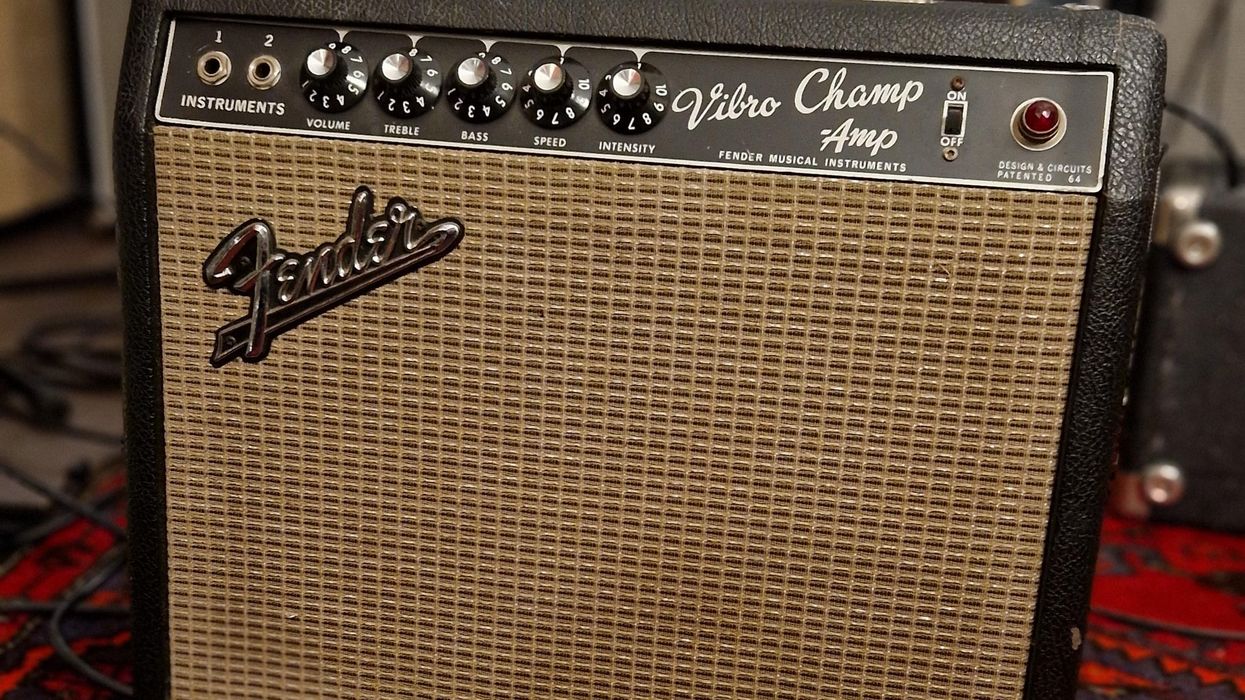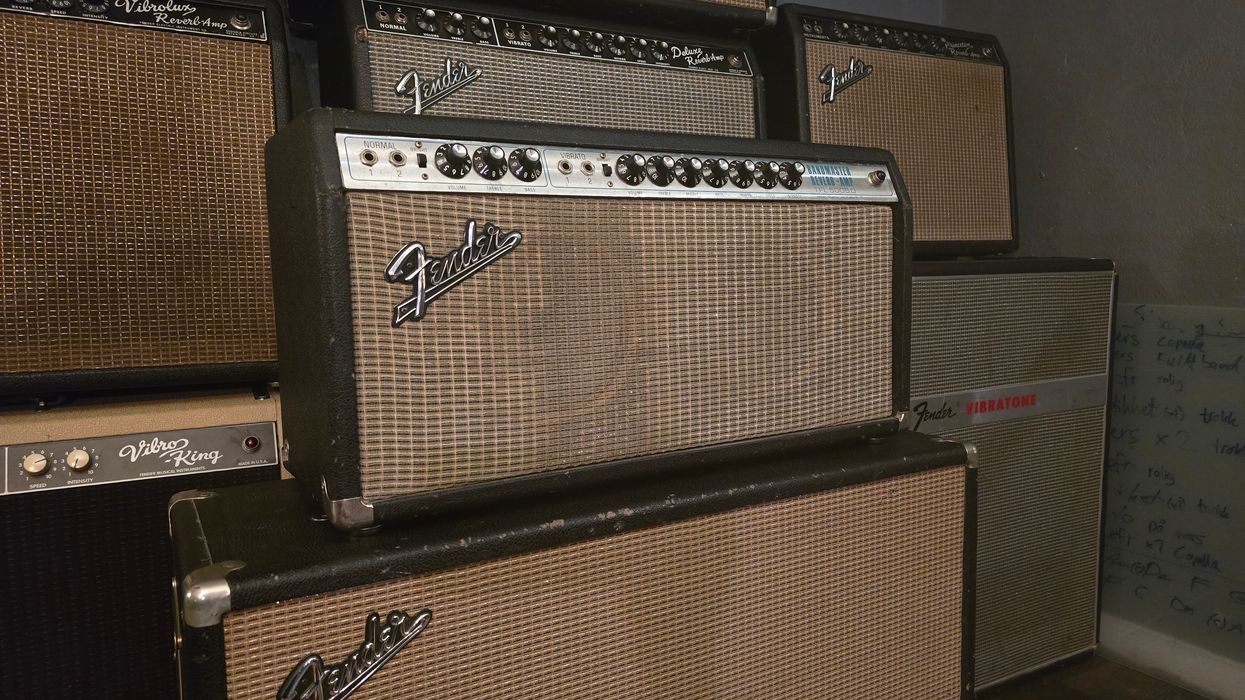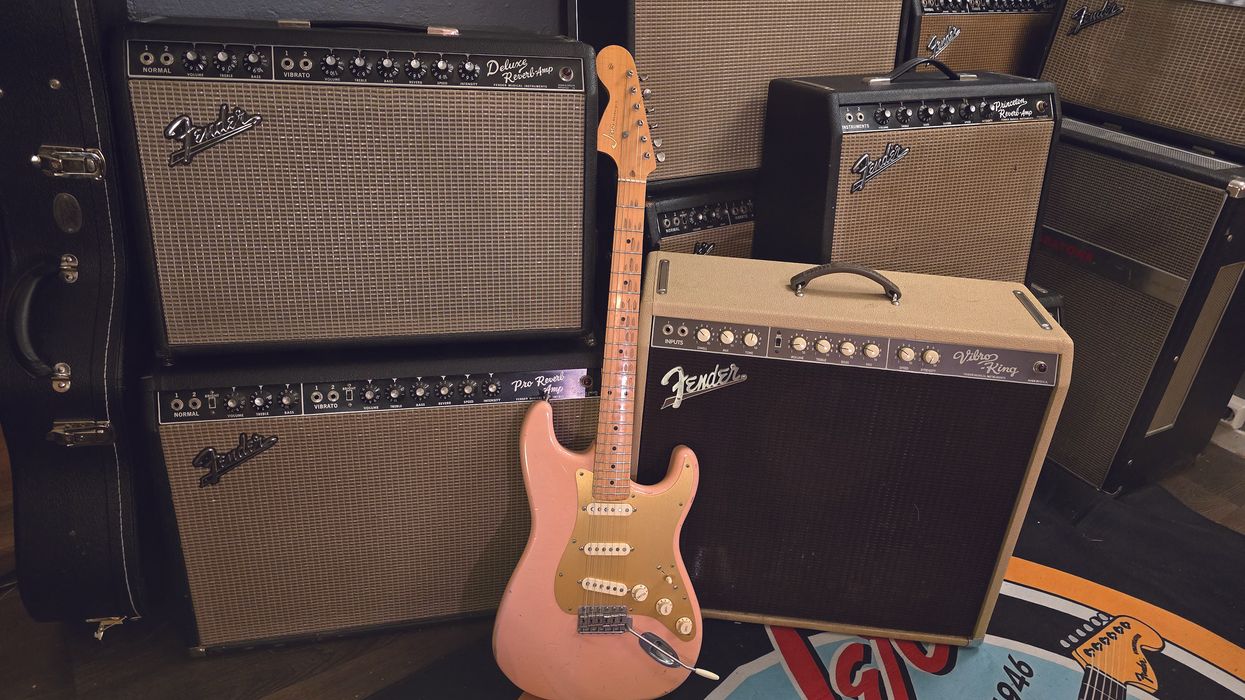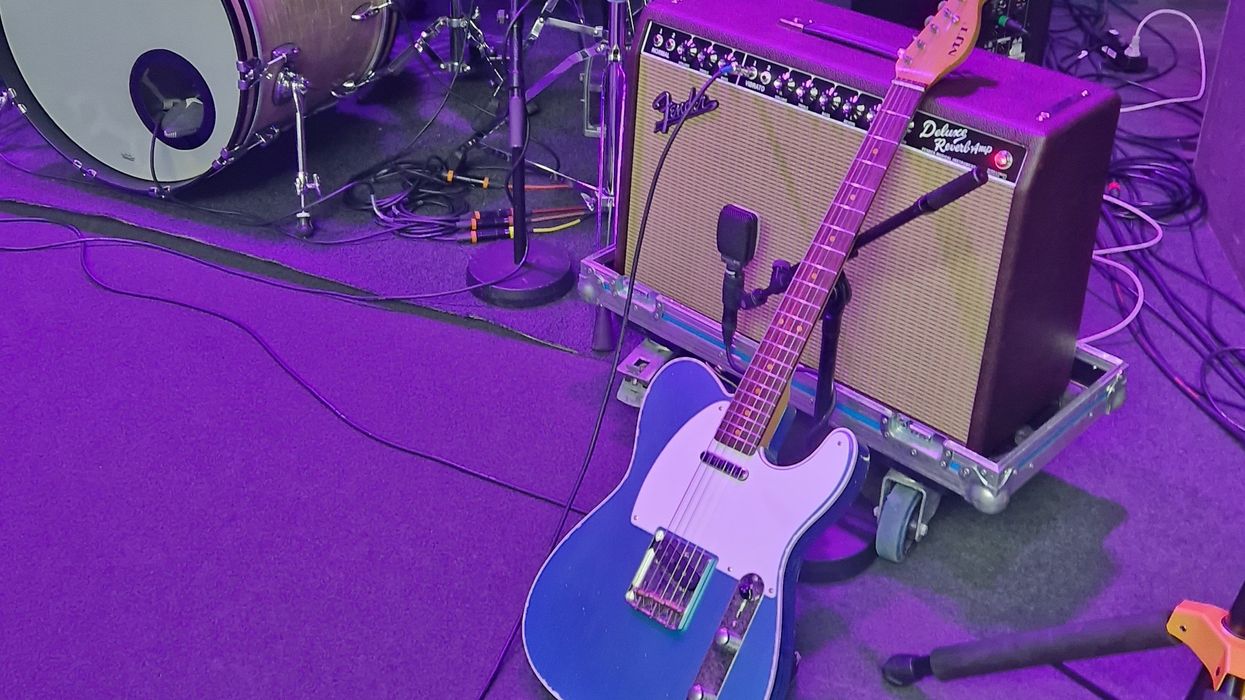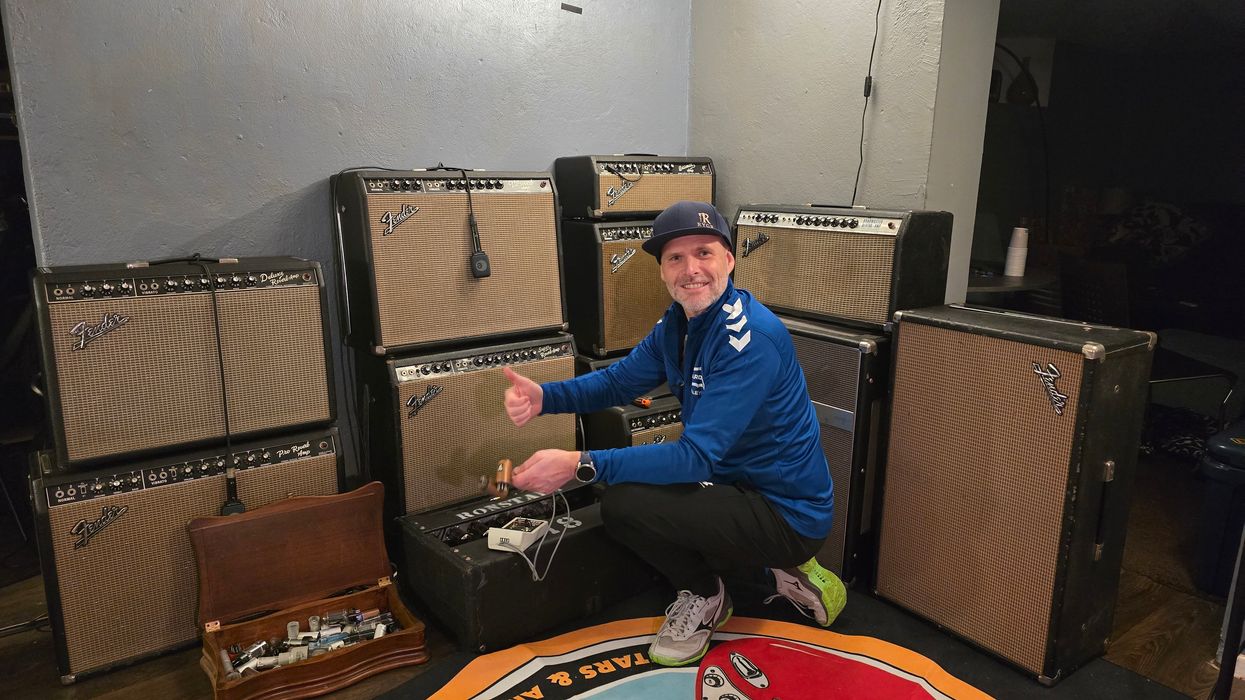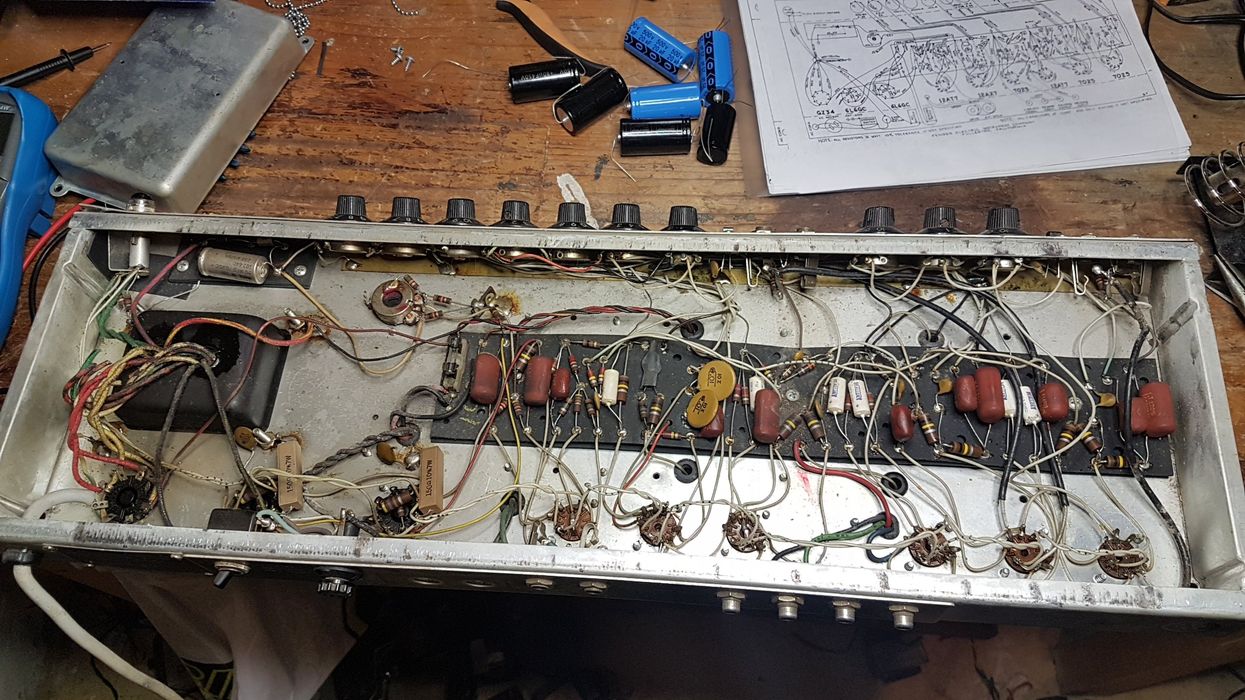This month, let’s talk about the black- and silver-panel Fender Champ, the tiniest of vintage Fender amps. Weighing only 22 pounds, it is super portable and easy to carry wherever my music takes me. It’s actually so small that I put it between my kids in the car’s backseat when we go on vacations. Before I share what I’ve learned about the Champ, let’s have a quick look in the rearview mirror.
Early in the Fender black-panel era, in 1964, the company reintroduced the previously tweed Champ with a new look and debuted the Vibro Champ. The single 8"-speaker combo configuration and single-ended 6V6-based power amp section was continued from the tweed Champ. These Champs produced only 6 watts, and the minimal control panel offered volume, treble, and bass—plus tremolo speed and intensity on the Vibro Champ. Unlike many other models, Fender kept these circuits almost unchanged during the silver-panel era, through 1982. After that, many popular and different offspring of the Champ have been produced, with both transistor and tube-driven circuits.
My appreciation for the Champ came late in life. When I was younger, I used my Super Reverbs for everything and never considered amps with anything less than one 12" or two 10" speakers. I saw no need for smaller amps with boxy tones fit for bedroom use only. But as I started to educate myself on Fender amps, I needed a Champ to study. I had to play it, experiment with tubes and mods, and learn everything about it. So, in 2005, I found a minty 1966 Vibro Champ on eBay for $800, completely original with the Oxford 8EV speaker.
When I want to play Elmore James Delta blues stuff, I use my ES-335 with my Vibro Champ.
With the Champ, Fender followed their scooped, black-panel tone-stack recipe with the 0.047 μF, 0.1 μF, and 250 pF tone caps and a fixed 6.8k mid resistor. As with the big brother Princeton Reverb, it lacked a mid control, bright switch, and a bright cap. The tone is straightforward, natural, and annoyingly modest and clean. Different from its Fender siblings, it hardly breaks up when pushed. In fact, the Champ stays clean all the way up to 10, but with loose, flabby bass and tinny speaker distortion. Humbucker guitars are able to get some cranked tones from Champs due to their hotter output. When I, for example, want to play Elmore James Delta blues stuff, I use my ES-335 with my Vibro Champ. It thrills me how single strings and soft picking come out clean, while hard pick attack and chords sound hairy and cranked.
Over the decades, players and techs have leaned towards modifications to get more distortion from the Champ. Personally, I’ve learned to like the clean and scooped tone, and I don’t want to lose the original character of the amp. But I wouldn’t mind a little more volume and punch, since it would open up a few important uses—like band practice with a loud drummer. And when it comes to modifications, I like easy and reversible mods. So here is what I have done to my Vibro Champ: First, I changed the rectifier tube from 5Y3 to GZ34 for increased plate voltage on the 6V6 power tube, which gives me a little more clean headroom. (A solid-state rectifier would also work.) Second, I replaced the original Oxford 8EV speaker with a Warehouse G8C. I have never looked back. I like Warehouse Guitar Speakers because they offer vintage Fender-style tone for a reasonable price. The WGS speaker makes the amp significantly louder, with more attack, firmer bass response, and without changing the Champ’s character.
As I’ve alluded, my Vibro Champ follows me wherever I go and is a part of my family. In the back of the amp, I keep an overdrive pedal, a reverb pedal, and a tiny 230/12V transformer so I can plug into one of the car’s 12V sockets. So, I am always Fender-ready.
May the tone be with you!
